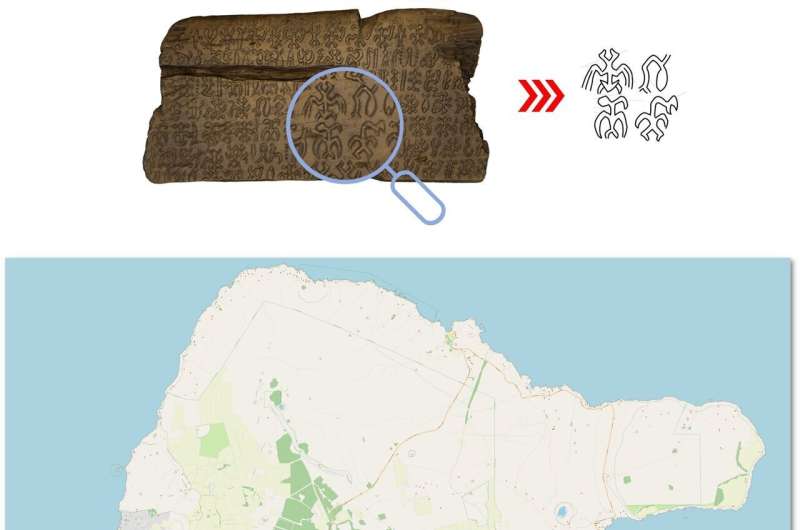February 14, 2024 report
This article has been reviewed according to Science X's editorial process and policies. Editors have highlighted the following attributes while ensuring the content's credibility:
fact-checked
peer-reviewed publication
trusted source
proofread
New evidence of independent written language on Easter Island before arrival of Europeans

A team of philologists, chemists, environmental physicists and engineers affiliated with several institutions across Europe has found evidence of an undeciphered script on wooden tablets created on Easter Island that represents an independent writing system. Their paper is published in the journal Scientific Reports.
When Europeans arrived on Easter Island, they found not just massive heads carved out of stone, but people native to the island and wooden tablets with undeciphered carved scripts. Oral records of the people who once lived on the island have long since vanished, as have the people—many succumbed to disease, were enslaved or were killed.
The written language represented by the scripts carved into the tablets has been attributed to people from elsewhere, their carvings carried back to Easter Island by European sailors. In this new effort, the research team took another look at the tablets and found evidence that they were created by people living on the islands before the arrival of Europeans, which means they had independently invented their own written language.
The script carved into the tablets has come to be known as Rongorongo. It was first noted by Europeans in the late 1800s who had arrived on the island, which is also known as Rapa Nui. Study of the script from pictures of several of the tablets revealed they were created by linking tiny pictures together, most of which represent easily identifiable objects such as human body parts, animals or tools. Prior attempts to date the tablets found that at least two of them had been made from trees that grew on Easter Island sometime during the 19th century, after the arrival of Europeans.
In this new effort, the research team radiocarbon-dated four more of the tablets that were taken from Easter Island and stored in a museum in Rome, Italy. They found that three of the tablets were made from wood cut down on Easter Island sometime after the arrival of Europeans—but the fourth had come from a tree felled 200 years before the Europeans had arrived.
It originated from a tree not native to Easter Island—it was from South Africa. The researchers suggest the wood for the tablet had washed ashore on Easter Island (likely due to a shipwreck), where natives had used it to carve messages in their native language.
More information: Silvia Ferrara et al, The invention of writing on Rapa Nui (Easter Island). New radiocarbon dates on the Rongorongo script, Scientific Reports (2024). DOI: 10.1038/s41598-024-53063-7
Journal information: Scientific Reports
© 2024 Science X Network



















